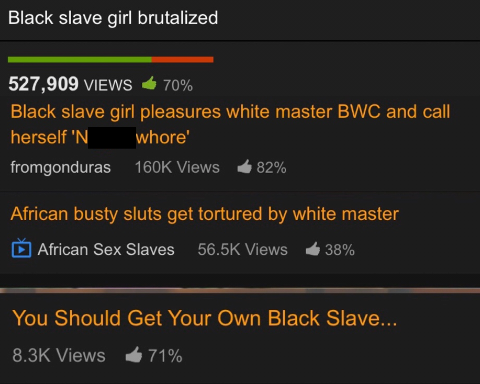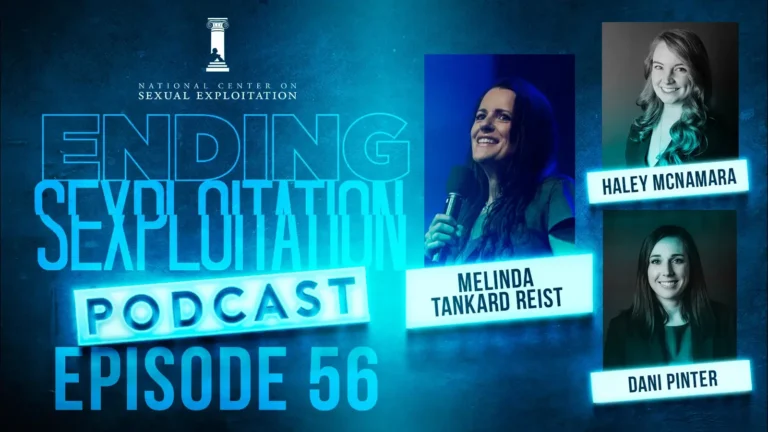The commercial sexual exploitation marketplace (a.k.a. “the sex trade”) is a haven for racial violence in this country. It violates the most basic human rights of women and girls of color, largely with impunity, as it has for centuries. Under chattel slavery in the antebellum South, enslaved black women were commonly raped by their owners and owners’ friends. Sometimes they were abused so that their forced reproductive labor would produce children that the owner wouldn’t have to bother to buy.
Some women, particularly those who were lighter-skinned, were sold as sex slaves to white men in the euphemistically-named “fancy” trade. Just outside Washington, DC, Isaac Franklin and John Armfield had the largest, wealthiest slave trading firm in the United States in the 1820s and 1830s. Franklin was one of the main pimps for the New Orleans sex trafficking market. Both men joked in their letters to each other about the women they routinely raped.
This pervasive sexual violence was not only admitted by the perpetrators, but decried by numerous abolitionists. Harriet Jacobs, a formerly enslaved woman, wrote that as a 15-year-old she was subjected to daily sexual abuse at the hands of her owner. Frederick Douglass called slave owners legalized brothel keepers, and averred that at least a million enslaved women were “consigned to a life of revolting prostitution” in the South.
Abolitionist Fanny Kemble, who eventually divorced her slave-owning husband, wrote after observing his plantation that “almost every Southern planter” had a family of color from sexual abuse of enslaved women. In other words, American slavery’s sexual exploitation was well known and not disputed, even if it is not prominent in contemporary memory.
And race-based sexual exploitation did not end with slavery.
During the Jim Crow era, red light districts were placed in black neighborhoods and segregation did not stop white men from frequenting them. A similar story played out in the North, with Southern black women being promised big city factory jobs and then forced into prostitution when they arrived. This sex trafficking was legal, as black women were unprotected by early anti-prostitution laws.
And race-based sexual exploitation and violence continues today.
Those sold in prostitution are disproportionately women and girls of color and those buying prostituted people are disproportionately white men. Survivor-leader Vednita Carter notes that strip clubs and massage parlors are “typically zoned in Black neighborhoods” and white men still go to them to buy sex.
According to Rights4Girls, 52% of children trafficked for sex in King County, Washington are black and 84% are girls – even though “Black girls only comprise 1.1% of the general population.” Similarly, in South Dakota, Native people comprise 8% of the population, yet 40% of sex trafficking victims are Native women. And in Louisiana, 49% of sex trafficking victims are black girls (who only make up 19% of the state’s youth).
Relatedly, girls of color are disproportionately represented in the criminal justice system, often as a direct result of sexual abuse. Girls of color are often arrested because someone is prostituting them when they should be treated like child sex trafficking victims. They are also charged with truancy after running away from abusive homes. In South Carolina, 81% of girls in the juvenile justice system are victims of sexual violence. The same is true for 76% of girls in Oregon’s juvenile justice system.
And race-based sexual exploitation and violence flourishes online.
The pornography industry traffics in racist themes, including racial stereotypes and verbal abuse directed at black women, on top of the violence that is already present in pornography. There is no form of degradation, humiliation, torture, or abuse that pornography hasn’t sexualized and racism is no exception. In the days following the terrible police-perpetrated murder of George Floyd, Pornhub – a massive mainstream site – hosted and monetized George Floyd and police-brutality-themed pornography. Pornhub also has Holocaust pornography and slavery role play targeting black women, such as these videos:

When racism is labeled “sex,” it apparently becomes politically invisible.
But it is textbook feminism that private violence – including when it is commercialized, and especially when it is sexual – is still violence. The American commercial sexual exploitation marketplace is rife with sexual and racial violence, human rights abuses with roots deep in American slavery. Black women continue be sold, tortured, used, and sometimes killed.
To echo Vednita Carter’s cry from thirty years ago: when will we be outraged about it?



